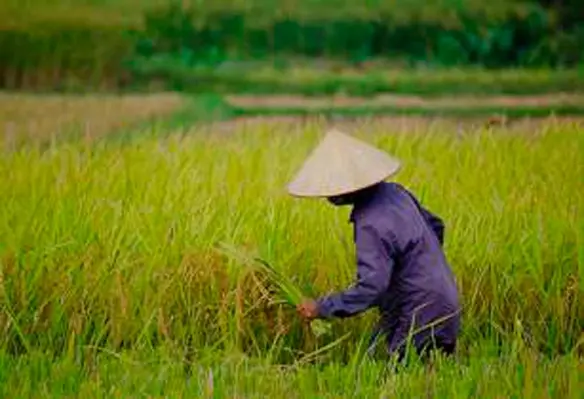Vietnam’s agriculture sector has shown remarkable improvement, but now is the time to sustain the growth curve and develop on achievements made so far, said a report by the Organisation of Economic Cooperation and Development (OECD)
The OECD Review of Agricultural Policies has highlighted the progress in the farm sector since the Doi Moi reform programme was launched in the mid-1980s, where the proportion of undernourished people fell from 46 per cent to 13 per cent, between 1990-1992 and 2012-2014. Simultenously, Vietnam also cemented its spot in the world food market, through exports of cashew, black pepper, coffee, cassava, rice and fisheries.
OECD trade and agriculture director Ken Ash said, “Vietnam’s agricultural transformation over the past two decades has been nothing short of remarkable. Going forward, the country needs to improve its policy environment, to enable investments that will allow the farm sector to continue to adapt to the opportunities created by rising demand and the challenges of climate change and limited resources. Rising labour costs will open opportunities to adopt new technologies and encourage larger farms, but they may also reduce the sector’s overall competiveness, particularly if newer labour-saving techniques are not readily accessible or adaptable to the dominant small-scale farming.”
The role of economic reforms cannot be underplayed in Vietnam’s success story. However, from now on, constraints on private investments such as land fragmentation should be mitigated. While large investors might have troublle accessing long-term financing, small-scale producers could rely on informal credit. While basic rural infrastructure has improved over the past decade, investment has not kept pace with economic growth, resulting in serious infrastructure bottlenecks, noted the OECD report.
The government, on its part, has tried to stablise domestic prices through policy-driven money transfers. Support to farmers averaged seven per cent of farm incomes over the 2011-2013 period. Such transfers are equivalent to 2.2 per cent of GDP, which is one of the highest across all countries covered.
This demonstrates that for a developing country with a large agricultural sector and low GDP, even low levels of agricultural support can have relatively high costs for the economy.





